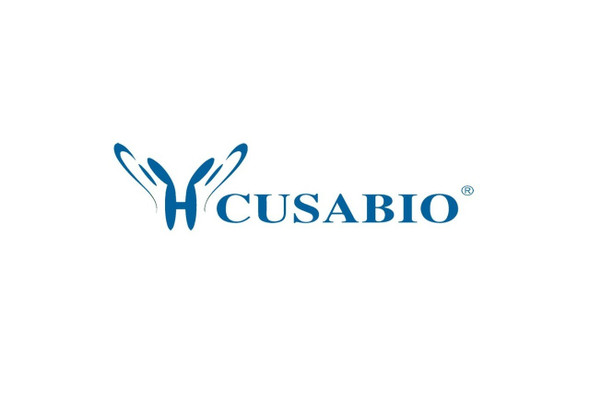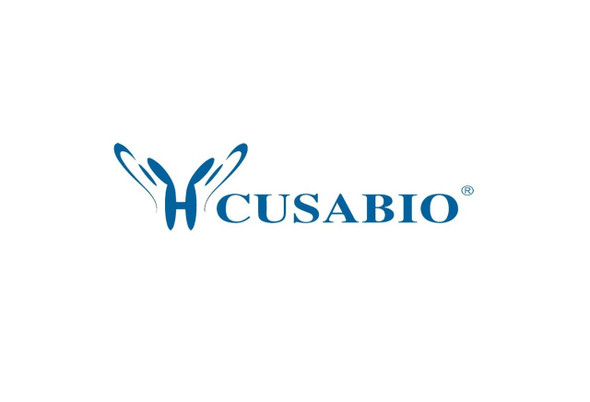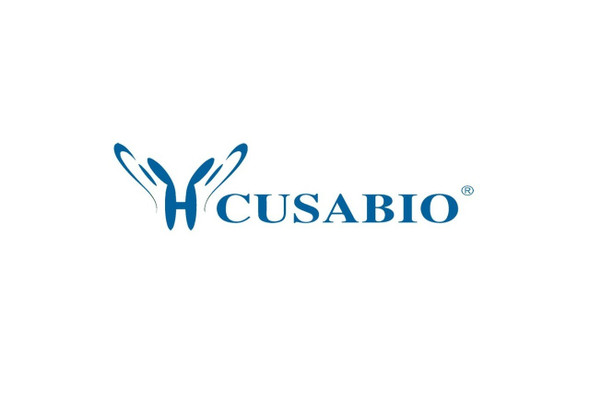Cusabio Human Recombinants
Recombinant Human E3 ubiquitin-protein ligase MIB1 (MIB1) , partial | CSB-RP132874h
- SKU:
- CSB-RP132874h
- Availability:
- 13 - 23 Working Days
Description
Recombinant Human E3 ubiquitin-protein ligase MIB1 (MIB1) , partial | CSB-RP132874h | Cusabio
Alternative Name(s): DAPK-interacting protein 1 ;DIP-1Mind bomb homolog 1Zinc finger ZZ type with ankyrin repeat domain protein 2
Gene Names: MIB1
Research Areas: Signal Transduction
Organism: Homo sapiens (Human)
AA Sequence: RNNRVMVEGVGARVVRGPDWKWGKQDGGEGHVGTVRSFESPEEVVVVWDNGTAANYRCSGAYDLRILDSAPTGIKHDGTMCDTCRQQPIIGIRWKCAECTNYDLCTVCYHGDKHHLRHRFYRITTPGSERVLLESRRKSKKITARGIFAGARVVRGVDWQWEDQDGGNGRRGKVTEIQDWSASSPHSAAYVLWDNGAKNLYRVGFEGMSDLKCVQDAKGGSFYRDHCPVLGEQNGNRNPGGLQIGDLVNIDLDLEIVQSLQHGHGGWTDGMFETLTTTGTVCGIDEDHDIVVQYPSGNRWTFNPAVLTKANIVRSGDAAQGAEGGTSQ
Source: E.coli
Tag Info: N-terminal 6xHis-tagged
Expression Region: 5-332aa
Sequence Info: Partial
MW: 40.1 kDa
Purity: Greater than 90% as determined by SDS-PAGE.
Relevance: E3 ubiquitin-protein ligase that mediates ubiquitination of Delta receptors, which act as ligands of Notch proteins. Positively regulates the Delta-mediated Notch signaling by ubiquitinating the intracellular domain of Delta, leading to endocytosis of Delta receptors. Probably mediates ubiquitination and subsequent proteasomal degradation of DAPK1, thereby antagonizing anti-apoptotic effects of DAPK1 to promote TNF-induced apoptosis . Involved in ubiquitination of centriolar satellite CEP131, CEP290 and PCM1 proteins and hence inhibits primary cilium formation in proliferating cells. Mediates 'Lys-63'-linked polyubiquitination of TBK1, which probably participates in kinase activation.1 Publication
Reference: Prediction of the coding sequences of unidentified human genes. XVI. The complete sequences of 150 new cDNA clones from brain which code for large proteins in vitro.Nagase T., Kikuno R., Ishikawa K., Hirosawa M., Ohara O.DNA Res. 7:65-73(2000)
Storage: The shelf life is related to many factors, storage state, buffer ingredients, storage temperature and the stability of the protein itself. Generally, the shelf life of liquid form is 6 months at -20?/-80?. The shelf life of lyophilized form is 12 months at -20?/-80?.
Notes: Repeated freezing and thawing is not recommended. Store working aliquots at 4? for up to one week.
Function: E3 ubiquitin-protein ligase that mediates ubiquitination of Delta receptors, which act as ligands of Notch proteins. Positively regulates the Delta-mediated Notch signaling by ubiquitinating the intracellular domain of Delta, leading to endocytosis of Delta receptors. Probably mediates ubiquitination and subsequent proteasomal degradation of DAPK1, thereby antagonizing anti-apoptotic effects of DAPK1 to promote TNF-induced apoptosis (By similarity). Involved in ubiquitination of centriolar satellite CEP131, CEP290 and PCM1 proteins and hence inhibits primary cilium formation in proliferating cells. Mediates 'Lys-63'-linked polyubiquitination of TBK1, which probably participates in kinase activation.
Involvement in disease: Left ventricular non-compaction 7 (LVNC7)
Subcellular Location: Cytoplasm, Cytoplasm, cytoskeleton, microtubule organizing center, centrosome, centriolar satellite, Cell membrane
Protein Families:
Tissue Specificity: Widely expressed at low level. Expressed at higher level in spinal cord, ovary, whole brain, and all specific brain regions examined.
Paythway:
Form: Liquid or Lyophilized powder
Buffer: If the delivery form is liquid, the default storage buffer is Tris/PBS-based buffer, 5%-50% glycerol. If the delivery form is lyophilized powder, the buffer before lyophilization is Tris/PBS-based buffer, 6% Trehalose, pH 8.0.
Reconstitution: We recommend that this vial be briefly centrifuged prior to opening to bring the contents to the bottom. Please reconstitute protein in deionized sterile water to a concentration of 0.1-1.0 mg/mL.We recommend to add 5-50% of glycerol (final concentration) and aliquot for long-term storage at -20?/-80?. Our default final concentration of glycerol is 50%. Customers could use it as reference.
Uniprot ID: Q86YT6
HGNC Database Link: HGNC
UniGene Database Link: UniGene
KEGG Database Link: KEGG
STRING Database Link: STRING
OMIM Database Link: OMIM










